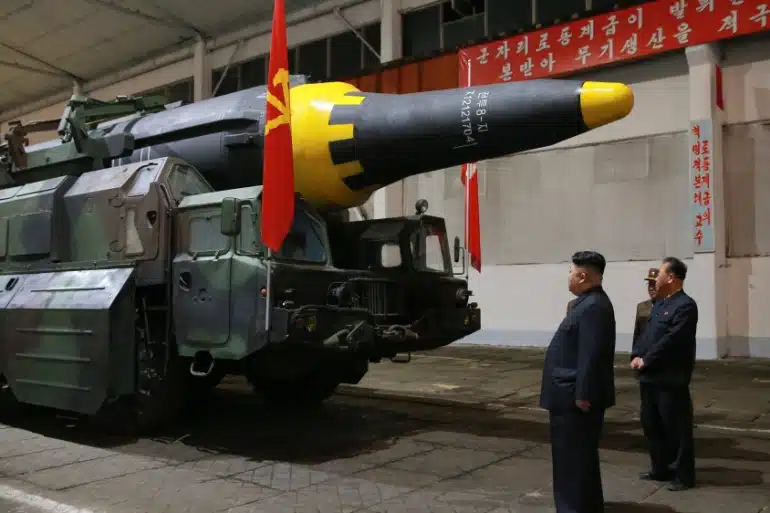A purported intermediate-range ballistic missile fired by North Korea was shot over a portion of northern Japan. It led to the temporary ban of certain train operations and a notice from Japanese government for residents of the Hokkaido region to seek cover during its flight. This is the second time North Korea did this after its first missile fire in 2017.

Planned or Casual?
According to Japan’s Kyodo news agency, the government triggered its J-Alert program on Tuesday for residents of the nation’s northeastern Aomori prefecture and Hokkaido, the country’s northernmost main island. According to NHK, a public broadcaster in Japan, the missile travelled around 4,000 kilometers in the air and attained a height nearly 1,000 km until crashing through into Pacific Ocean after 22 minutes. local time, according to an unnamed official source. The firing, which came after a recent string of tests by North Korea, is a hazardous conduct, and I strongly condemn it, Prime Minister Fumio Kishida said during the media conference. He declared that he will call a meeting of the National Security Council to consider the issue. Earlier in the week, Japan, the US, and South Korea conducted trilateral military drills, which have a history of inciting Pyongyang. This missile launch marks Pyongyang’s fifth in a week. Two missiles crashed on Saturday in waters outside of Japan’s internal economic zone. The majority of North Korea’s missile experiments are carried on lofted, high-altitude flight paths, avoiding neighbouring countries. North Korea’s leader, Kim Jong-un, ruled out the chance of discussions on denuclearization as the country passed a legislation earlier this month proclaiming that it is a nuclear weapons state. Despite extensive sanctions, Pyongyang completed multiple nuclear tests between 2006 and 2017. The exercises, according to the United States and South Korea, who put on its own display of cutting-edge weapons on Saturday to celebrate its Armed Forces Day, are primarily defensive in nature. despite global sanctions, there were nuclear testing between 2006 and 2017. While Pyongyang has performed a record amount of weapons tests this year, including one of what it claimed to be an intercontinental ballistic missile (ICBM), which is prohibited by UN sanctions, the most recent experiments were of short-range missiles. According to some commentators, Kim Jong Un wants to utilize his country’s increased arsenal to put pressure on Washington to recognize his nation as a nuclear state. Kim Jong Un is determined to modernizing the military. South Korean officials have stated that North Korea may conduct a nuclear test following the conclusion of the Chinese Congress and prior to the US mid-term elections in Nov. Hirokazu Matsuno, the chief cabinet secretary of Japan, stated that no early reports of damage were made following the North’s missile test. After a 22-minute flight, according to him, the missile touched down in waters outside the nation’s exclusive economic zone. To discuss the launch, he convened a meeting of the National Security Council and warned that now the North’s “reckless nuclear provocations” will be met with a harsh response from the South and the rest of the international community. In what was perceived as an apparent reaction to bilateral military exercises involving South Korea and the United States as well as the allies’ additional training involving Japan last week, the launch is already the 6 time North Korea is testing its missile within a short span of 10 days.

Not The First Time!
In 2017, North Korea had fired two ballistic missiles into the sea to which the then Japanese leader, Shinzo Abe who now is dead, reacted very critically. South Korea was the first nation to react to such a danger imposing act by the ultimate unpredictable nation of North Korea. It was later found that the launch took place from the Sunan district of Pyonggyang. North Korea had previously declared its intentions about sinking Japan and turning America into ashes. This 2022 attack is a big change again in world politics after the ongoing crisis between Ukraine and Russia.













